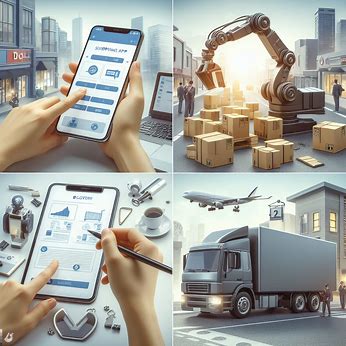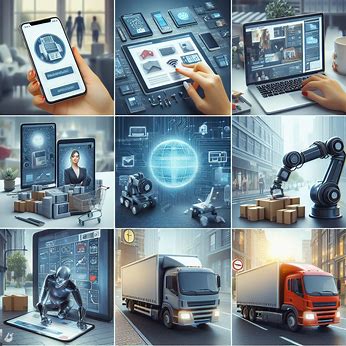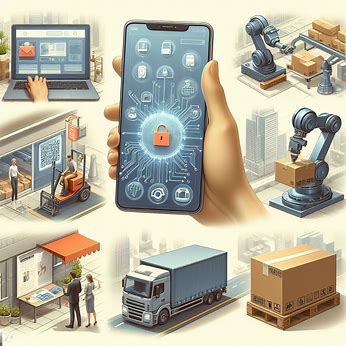Unfolding the Technological Spectrum: A Deep Dive into E-Commerce Technologies
Introduction:
The world of commerce has experienced a seismic shift with the advent of e-commerce technology. From the early days of online shopping to the current era of seamless transactions and personalized shopping experiences, technology has played a key role in the evolving e-commerce landscape. During this comprehensive investigation, we will uncover the complex fabric of e-commerce technology and examine the key drivers, emerging trends, and profound impacts on businesses and consumers.
E-commerce technology development:
Internet trading begins: The origins of e-commerce date back to the late 20th century, when the Internet began to gain popularity. Early e-commerce platforms were primarily text-based, allowing users to browse and purchase products through simple interfaces. Payment methods were limited, and security issues were common.
Overview of Secure Sockets Layer (SSL):
The introduction of SSL in the mid-1990s represented a milestone in electronic commerce. SSL encryption provides a secure way to store confidential information, such as:B. credit card information, to be transmitted over the Internet. This increased security laid the foundation for the development of online shopping.
Emergence of e-commerce platforms:
Specialized e-commerce platforms such as Amazon and eBay emerged in the late 1990s and early 2000s. These platforms provided a central marketplace where sellers could list their products and consumers could browse and make purchases. This era also saw the integration of electronic payment gateways, making transactions more efficient.
Mobile Commerce (M-Commerce):
With the spread of smartphones, the concept of mobile commerce has gained momentum. Mobile apps and responsive websites have made it easier for users to shop on their mobile devices. This shift towards mobile commerce has brought new challenges and opportunities, such as responsive design and mobile payment solutions.
Social
Commerce:
Social media platforms have become an integral part of e-commerce strategies with the rise of social commerce. Companies have used platforms such as Facebook, Instagram and Pinterest to showcase their products, interact with customers and facilitate transactions directly in the social media environment.
Blockchain and Cryptocurrencies:
The emergence of Blockchain Technology has led to innovations in payment systems and greater transparency in e-commerce transactions. Cryptocurrencies, especially Bitcoin, offer an alternative form of payment and offer decentralized and secure transactions.
Key Elements of E-Commerce Technology:
eCommerce platforms:
e-commerce platforms form the backbone of online trading. Commonly used platforms include Shopify, WooCommerce (WordPress), Magento, and BigCommerce. These platforms offer a range of features including product management, order processing and secure payment gateways.
Electronic payment systems:
Electronic payment systems are essential for the security of online transactions. Common payment methods include credit cards, digital wallets (for example, PayPal, Apple Pay amazon pay, Google Pay) and cryptocurrencies. Integrating secure and user-friendly payment gateways is essential for smooth transaction processing.
Customer Relationship Management (CRM):
CRM systems help companies manage and analyze customer interactions across the entire customer lifecycle. This includes customer data, purchase history and communication preferences. CRM integration enables personalized marketing activities and stronger customer loyalty.
Inventory Management Systems:
Effective inventory management is critical for e-commerce companies to ensure accurate product availability, avoid overstocks or out-of-stocks, and improve order fulfillment. Inventory management systems synchronize product lists with inventory levels in real time, reducing operational challenges.
Security measures:
Security is of extremely importance in e-commerce. SSL certificates, encryption technologies and secure payment gateways protect sensitive information from unauthorized access. Regular security audits and compliance with industry standards such as PCI DSS are essential to maintaining trust and credibility.
Data Analysis and Business Analysis:
data analysis tools provide detailed insights into customer behavior, preferences and trends. By analyzing this data, companies can make informed decisions, optimize their marketing strategies, and improve the overall customer experience.
Artificial intelligence (AI) and Machine Learning (ML):
AI and ML technologies are increasingly being integrated into e-commerce systems. These technologies power recommendation engines, customer service chatbots, fraud detection algorithms, and personalized shopping experiences, helping to increase efficiency and customer satisfaction.
New trends in e-commerce technologies:
Voice Commerce (V-Commerce):
voice-activated devices and virtual assistants have brought voice commerce to life. Consumers can now make purchases, search for products, and interact with e-commerce platforms using voice commands. This trend reflects the growing importance of convenience and hands-free interaction when shopping online.
Augmented reality (AR ) and Virtual Reality (VR):
AR and VR technologies are changing the e-commerce landscape by providing immersive shopping experiences. Augmented reality allows users to view products in their real-world surroundings before making a purchase, while virtual reality creates virtual storefronts for an immersive browsing experience.
Progressive Web Apps (PWAs):
PWA combines the best features of websites and mobile apps, offering fast loading times, offline functionality and a responsive user interface. This approach improves user experience and addresses slow loading website issues, especially on mobile devices.
Templates per subscription:
subscription e-commerce models are becoming increasingly popular, especially in industries such as beauty, fashion and food. These models offer curated products that are delivered at regular intervals, providing convenience to consumers and encouraging brand loyalty.
Green and Sustainable E-Commerce:
Growing awareness of environmental issues has led to an increase in sustainable practices in e-commerce. Companies use eco-friendly packaging, promote responsible sourcing and emphasize sustainable manufacturing processes to meet the growing demand for eco-friendly alternatives.
Social Commerce Integration:
Social commerce is constantly evolving and platforms are integrating shopping features directly into their user interfaces. Live shopping events, shoppable posts, and seamless payments on social apps are becoming more common.
Benefits of E-Commerce Technology:
Global Reach:
E-commerce removes geographical barriers and allows businesses to reach audiences around the world. Small and medium-sized enterprises (SMEs) can compete internationally by expanding their customer base without having to be physically present in different locations.
24/7 availability:
Unlike traditional physical stores with limited opening hours, e-commerce platforms are available 24/7. This gives consumers the opportunity to shop at times that suit them, helping to increase sales and customer satisfaction.
Profitability:
E-commerce reduces the overhead costs associated with maintaining physical stores. Companies can operate with lower inventory costs, fewer employees, and lower rental and utility costs, resulting in better profit margins.
Personalized shopping experiences:
data-driven technologies enable companies to personalize shopping experiences for each customer. Personalized product recommendations, targeted marketing campaigns and tailored promotions help make the buying process more engaging and satisfying.
Effective Inventory Management:
eCommerce technologies simplify inventory management by providing real-time visibility into inventory levels and reducing the risk of overstocks or out-of-stocks. Automation tools help you streamline your order fulfillment processes and improve overall operational efficiency.












.jpeg)






.png)
0 Comments